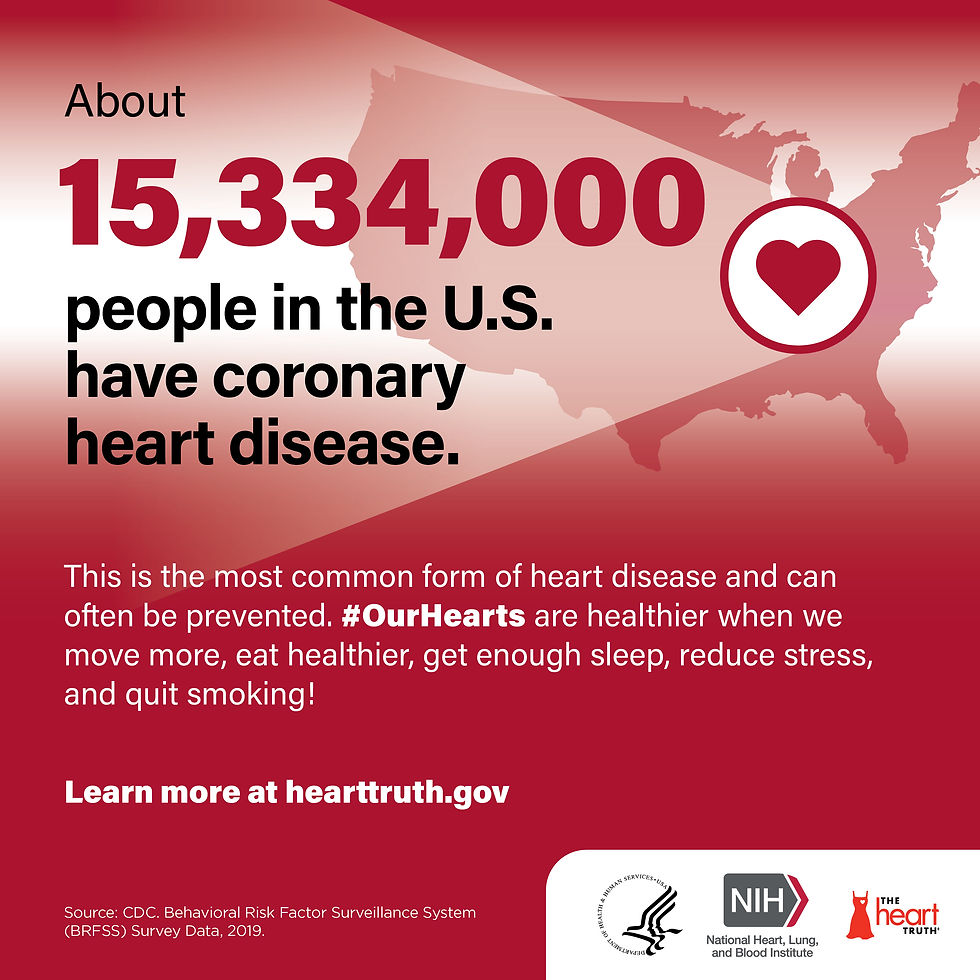February is Heart Month
- Jeanine

- Feb 7, 2021
- 1 min read

When we take care of #OurHearts as part of our self-care, we set an example for those around us to do the same.
Cardiovascular disease is on the rise, but we know how to curb it. We’ve done it before.
New global data analysis highlights the urgency of translating research into practice
Over the last 30 years, deaths and disability from cardiovascular disease have been steadily rising across the globeexternal link. In 2019 alone, the condition, which includes heart disease and stroke, was responsible for a staggering one-third of all deaths worldwide.
Then came the COVID-19 pandemic.
In the early months of the coronavirus pandemic, cardiovascular disease quickly emerged as a risk factor for the severe cases of COVID-19—the ones often ending in hospitalization and death. Cardiovascular disease is on the rise, but we know how to curb it. We’ve done it before | NHLBI, NIH

You can help protect your heart against #HeartDisease with self-care, like moving more, eating healthier, managing stress, not smoking/vaping, and getting quality sleep. Use
#OurHearts to share how you’re showing your heart more love! www.nhlbi.nih.gov/ourhearts
Devoting some time every day to care for yourself can go a long way toward protecting your heart health. Self-care, like moving more, preparing healthier meals, getting quality sleep, and taking a moment to de-stress, helps your heart. #OurHearts www.nhlbi.nih.gov/ourhearts

Not getting enough physical activity puts you at risk for #HeartDisease and stroke. Don’t have a lot of time? Try doing 10 minutes of activity, three times a day! Use #OurHearts to share how you’re moving more to protect your heart. www.nhlbi.nih.gov/ourhearts





Comments